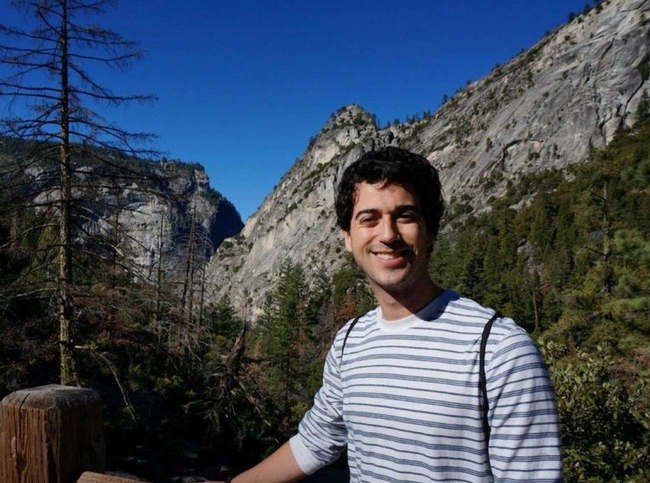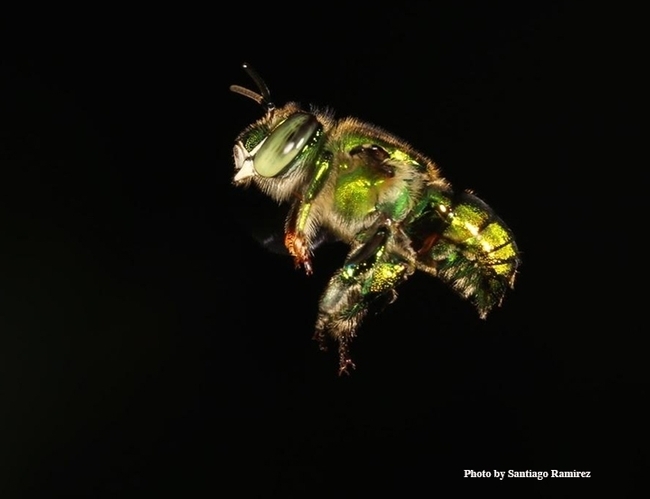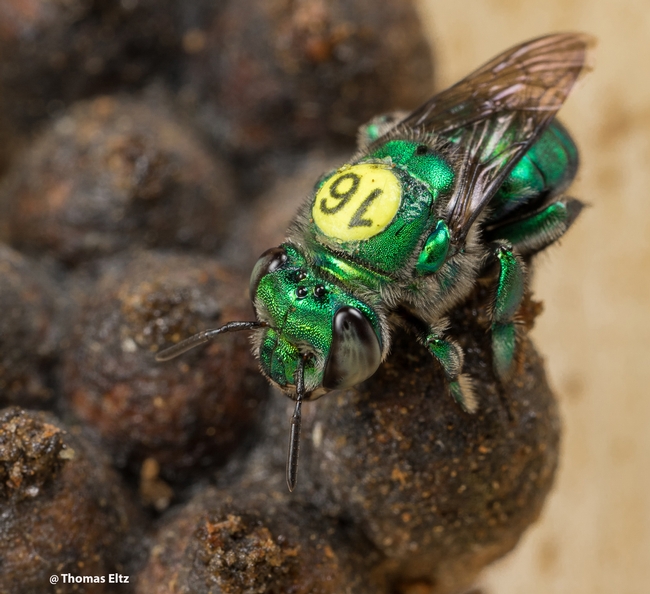
Postdoctoral researcher Nick Saleh of the Santiago Ramirez lab, UC Davis Department of Evolution and Ecology, will present a live talk, coupled with a question-and-answer session, on "All About Social Behavior in Bees (Especially Orchid Bees)" from 2 to 3 p.m. on Zoom. Access the Zoom link here.
The event is free and geared for families, said spokesperson Tabatha Yang, education and outreach coordinator for the Bohart Museum of Entomology.
- There are around 200 species of orchid bees.
- Orchid bee males make species-specific perfumes from fragrances collected from a variety of sources (including, but not limited to orchids).
- Orchid bees are hugely important pollinators in the neotropical region.
- Orchid bees are corbiculate bees, the group which also contains honey bees, bumblebees, and stingless bees.
- Orchid bees have typically been considered solitary bees, but we now know they can have a diversity of simple social behaviors.
"I am broadly interested in the mechanistic basis of behavioral evolution in animals, especially insects, in the context of social and sexual communication," Saleh says on his website. "Much of my research has investigated the evolution of social behavior in orchid bees, using them as a model system to examine transitions from solitary to social life-histories. I take an integrative approach to research, utilizing behavioral, transcriptomic, genomic, and chemical data to understand how socially sensitive physiology and communication systems evolve and function."
Orchid bees, distributed throughout South and Central America, are easily distinguished by their brilliant metallic coloration, primarily green, gold and blue.
“Euglossine--or orchid--bees constitute a diverse group of conspicuous insect pollinators from tropical America,” Santiago told the crowd at the 2018 UC Davis Bee Symposium in his talk, The Evolution and Chemical Ecology of Orchid Bees. "Male euglossine bees do not produce their own pheromones, but instead gather and accumulate perfume compounds from orchid flowers, fungi, and other resources, to subsequently present to females during courtship display.” Santiago was named a Chancellor's Fellow in January 2020, a five-year fellowship award.
Due to the COVID-19 pandemic, the 10th annual UC Davis Biodiversity Museum program is all virtual this year via webinars and pre-recorded presentations, and takes place throughout the month of February. The science-based event traditionally occurs on only one day--the Saturday of Presidents' Weekend, when families and friends gather on campus to learn first-hand about the UC Davis museums and collections.
This year's biodiversity event is featuring 12 museums or collections:
- Anthropology Museum
- Arboretum and Public Garden
- Bohart Museum of Entomology
- Botanical Conservatory
- California Raptor Center
- Center for Plant Diversity
- Häagen-Dazs Honey Bee Haven
- Nematode Collection
- Marine Invertebrate Collection
- Museum of Wildlife and Fish Biology
- Paleontology Collection
- Phaff Yeast Culture Collection
For more information and the schedule, access these two formats on the UC Davis Biodiversity program website: (1) live talks and demonstrations and (2) pre-recorded talks and activities. Information on the biodiversity museum events also appear on social media, including Facebook, Instagram, and Twitter, @BioDivDay.
To help support the Biodiversity Museum event, contributions are being accepted through a month-long crowdfunding campaign program at https://crowdfund.ucdavis.edu/project/24310.
Resource:
"Can Scents Create New Species? Sounds Like Orchid Bee Evolution" (Feature story on research of Santiago Ramirez on the College of Biological Sciences website, Jan. 13, 2020)
Attached Images:


